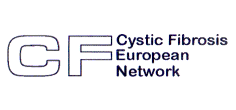- Genetic Tests
- Genetic Counseling
- SANCO prenatal test
- RHD SANCO test
- Infano test
- Parento test
- Genetic knowledge database
- Polgenom
- Certificates
- Team
- Make an appointment
- Contact
Badania genetyczne
Gaucher`s Disease
Gaucher`s Disease
Test code: GD-2Identification of the most frequent mutations c.1226A>G, p.Asn409Ser (N370S), c.1448T>C, p.Leu483Pro (L444P), c.84dupG (84GG), c.115+1G>A (IVS2+1G>A) and other mutations in the exons 3, 10 and 11 of the GBA gene
We perform genetic testing from:
 saliva (the Oragene kit, spitting into a tube is required for sample collection, therefore the kit is not suitable for children under the age of 5)
saliva (the Oragene kit, spitting into a tube is required for sample collection, therefore the kit is not suitable for children under the age of 5)
 venous blood collected
venous blood collected
Gaucher`s Disease
Gaucher disease is an autosomal recessive disease, the most prevalent lysosomal storage disorder (LSD), with an incidence of about 1 in 20,000 live births. Classically, the disease is categorized phenotypically into 3 main subtypes. Type I is the most common form of Gaucher disease and lacks primary central nervous system involvement, while types II and III are characterised by central nervous system involvement and neurologic manifestations. All the above forms of the disease are caused by mutations in the beta-glucocerebrosidase (GBA) gene that cause a deficiency of enzym activity. As a result of this deficiency, an intracellular accumulation of glucosylceramide occurs, primarily within macrophages. The disease course is quite variable, ranging from no outward symptoms to severe disability and death. The disease and its heterozygous carriers can be detected by sequencing the GBA gene. Fortunately, effective treatments, such as an enzyme replacement therapy, are available, at least for some variants of the disease. Providing the missing enzyme, which is produced as a recombinant protein, makes possible the treatment for type 1 Gaucher disease in all age groups and most readily in children.









